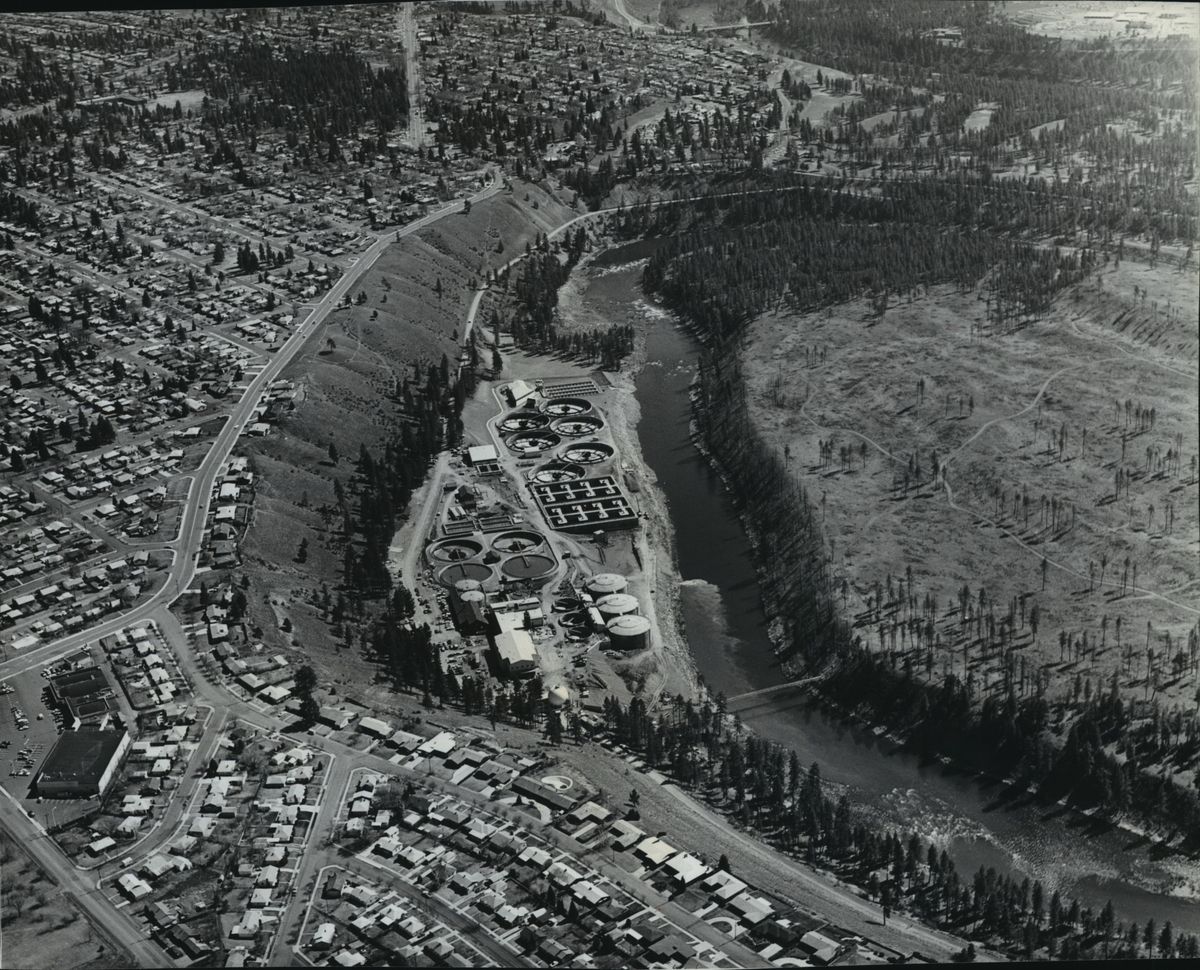Then and Now: Riverside Park Water Reclamation Facility

Spokane’s sewage disposal plant, today called the Riverside Park Water Reclamation Facility, was completed in 1958. Before that, most of the city’s sewage went straight into the Spokane River.
Out of concern for water pollution and the need for public works projects during the Depression, the Washington Legislature specifically recommended that Spokane build a sewage disposal plant in 1932.
The voters turned down bond issues in 1933 and 1936 to pay for it. Nevertheless, miles of sewer collection pipe were built throughout the city during the Great Depression through the Works Progress Administration.
In 1940, voters defeated a proposal to combine the city water department with a new wastewater department, a move that some said would allow the city to force water ratepayers to finance a new sewage plant.
“Dumping of raw, untreated sewage into the Spokane River at 34 places within the city constitutes a menace to health, makes fishing impossible and camping along the river undesirable,” Paul Schiffner, an attorney advising the city, told a meeting the Chamber of Commerce in 1946. A week later, voters approved the Sewage Treatment System Bond of $3.6 million in 1946, which included more than a million dollars of state money.
Actual construction was delayed for more than a decade, partly because neighbors near the proposed riverfront site in northwest Spokane went to court over the impact of foul odors from the plant.
The plant opened in 1958 and expanded in 1962. The facility provided basic sewage treatment.
The Sewer Division became part of the city’s utility department in 1959.
The Clean Water Act of 1972 created new standards for all treated water, so the plant was substantially upgraded through the 1970s to comply with the new law.
Beginning in 1998, the RPWRF started a phased upgrade program with improvements to clarifiers, aeration basins, digesters and odor control.
Most recently, the plant has begun adding membrane filtration to remove more heavy metals, phosphorus and PCBs to meet ever more stringent standards.
Today, the plant treats more than 30 million gallons a day and removes 6,500 tons of solids annually from the effluent. The dirt-like solids are spread on farmland where animal feed – but no human food – is grown.
Spokane County opened its own state-of-the-art facility servicing Millwood and Spokane Valley in 2011.